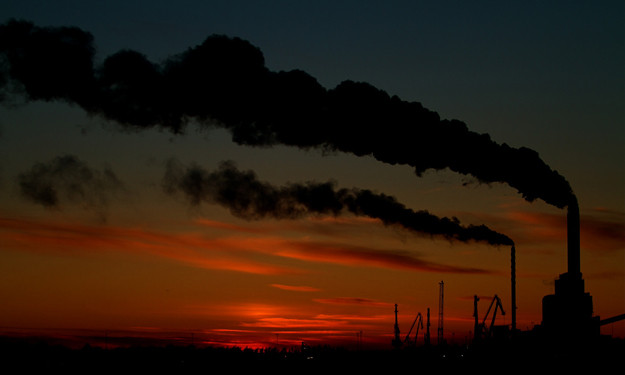Wally's World
BRAD JOHNSON
Thirty-five years ago this week, Wallace Broecker predicted decades of dangerous climate change caused by humans. Unfortunately, he was all too prescient.

On Aug. 8, 1975, geoscientist Wallace Smith Broecker published "Are We on the Brink of a Pronounced Global Warming?" in the journal Science, the first time the iconic phrase "global warming" was used in a scientific paper. Broecker -- known by all as Wally -- was already a prominent scientist by then, having served on Columbia University's faculty for 16 years. Today, at age 78, Broecker is recognized as one of the fathers of climate science, with more than 450 journal publications and 10 books to his name, ranging from paleoclimatology to chemical oceanography.
The past 35 years have also seen humanity answer Wally's question in the affirmative, running a radical experiment on the only planet we inhabit. Carbon dioxide levels have risen 40 percent to 392 ppm from preindustrial levels of 280 ppm, and the global mean temperature has risen 0.8 degrees Celsius, on 1.3 trillion tons of carbon dioxide. Humanity has produced 60 percent of that global-warming pollution since Broecker's paper was published. As a result, the planetary ecosystem has fundamentally changed -- weather has become more extreme, seasons have shifted, and global ice and snow are in decline -- with more rapid and radical change on its way.
Wally's seminal Science paper built upon decades of earlier work by scientists who had found natural cycles of planetary warming and cooling in Greenland ice cores (Dansgaard, 1973), developed a mean global temperature from meteorological records (Mitchell, 1963), modeled the greenhouse influence of carbon dioxide on the atmosphere (Manabe and Wetherald, 1967, 1975; Rasool and Schneider, 1971), and measured the rise of atmospheric carbon dioxide from the burning of fossil fuels (Keeling, 1973). Synthesizing the work, Broecker accurately predicted "that the present cooling trend will, within a decade or so, give way to a pronounced warming induced by carbon dioxide."
"To those who even today claim that global warming is not predictable," climatologist Stefan Rahmstorf writes at the peerless RealClimate blog, "the anniversary of Broecker's paper is a reminder that global warming was actually predicted before it became evident in the global temperature records over a decade later."
In fact, one can even go back to the 1896 work of Swedish scientist Svante Arrhenius, in which he predicted that the burning of coal could eventually double atmospheric CO2, leading to a temperature increase of several degrees Celsius, though he believed such a day was far into the future.
For the next 50 years, most scientists considered man-made climate change an unlikely speculation. In the scientific explosion following World War II, however, scientists began using new measurements and the era's new digital computers to revisit the effect of humanity's carbon dioxide pollution on the climate, and our modern understanding of the greenhouse effect developed through the work of pioneering scientists like Gilbert Plass, Hans Suess, Roger Revelle, and Bert Bolin (who became the first chair of the U.N. Intergovernmental Panel on Climate Change in 1988). By the end of the 1950s, Frank Capra had made an instructional film on man-made global warming, and Revelle had testified before Congress about the "large-scale geophysical experiment" humanity was conducting with industrial greenhouse gas pollution.
